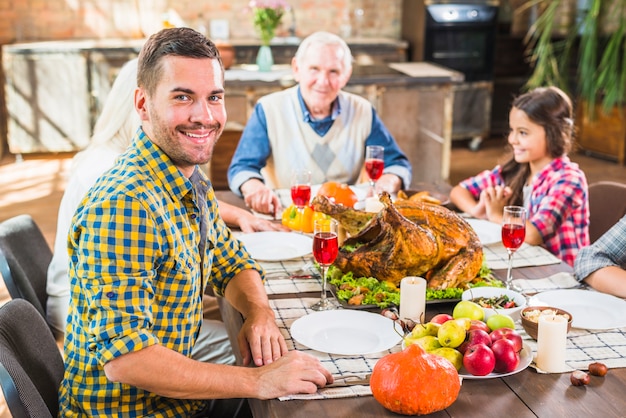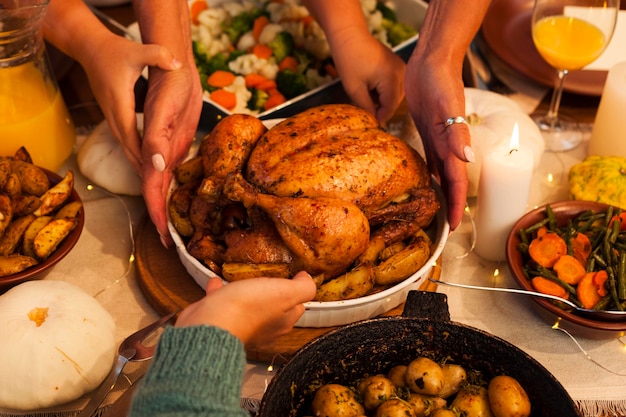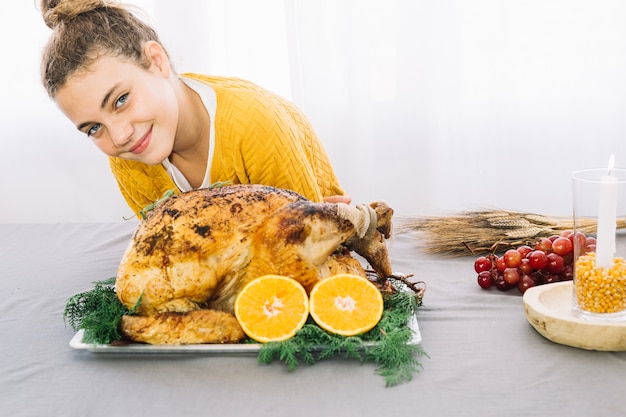Part 1: Getting to Know Your Bird

The Importance of Weight
Imagine trying to bake a cake without knowing the size of your pan! The same principle applies to turkey roasting. Turkeys, those majestic feathered creatures, come in a variety of sizes, each demanding different cooking times. The first step in your journey? Weighing your turkey accurately. A kitchen scale is your best friend here, ensuring precise measurements.Decoding Cooking Times
Here's a helpful guide to give you a general idea of cooking times based on turkey weight:
| Turkey Weight (kg) | Cooking Time (hours) |
|---|---|
| 4-5 | 2-2.5 |
| 5-6 | 2.5-3 |
| 6-7 | 3-3.5 |
| 7-8 | 3.5-4 |
Remember, this is just a starting point. Your oven's quirks, the turkey’s internal temperature, and your desired level of doneness can all influence the cooking time.
The Art of Doneness: Knowing When It's Ready
A well-cooked turkey is a symphony of flavors and textures. But how do we know when the symphony is complete? Enter the trusty meat thermometer, your culinary conductor. Aim for an internal temperature of 165°F (74°C) in the thickest part of the thigh. This ensures the turkey is cooked through and safe for consumption.Part 2: The Pre-Game: Preparing for a Stellar Roast

The Magic of Brining: Unlocking Juiciness
Think of brining as a luxurious spa treatment for your turkey. This technique involves immersing the bird in a salty water solution, infusing the meat with moisture and creating a truly succulent outcome. It’s a bit of a time commitment, but the results are worth every minute. I typically brine my turkey for 12-24 hours in the fridge. While longer brines are ideal, you can find recipes for shorter brines, perfect for busy schedules. The key is to have enough brine to fully submerge the bird. My go-to recipe combines water, salt, sugar, and aromatic herbs for a beautifully balanced flavor profile.The Stuffing Debate: A Culinary Controversy
Ah, stuffing – a topic that sparks passionate debates. Some swear by stuffing the turkey, while others advocate for separate cooking. I fall firmly into the latter camp, prioritizing food safety. turkey stuffing needs to reach an internal temperature of 165°F (74°C) for it to be safe to eat, and stuffing inside the bird can hinder this crucial step. If you’re adamant about stuffing the turkey, ensure it's cooked in a separate dish alongside the bird, allowing you to monitor its temperature and ensure it reaches a safe internal temperature.Trussing: Taming the Bird
Now, trussing might sound intimidating, but it's actually quite simple. Think of it as a culinary hug for your turkey. Trussing involves tying the legs and wings together, ensuring even cooking and preventing the bird from drying out. There are numerous methods, but I prefer using kitchen twine, a trusty tool for achieving a beautifully bound bird.Part 3: The Big Day: roasting time

Oven Prep: Setting the Stage
Before even thinking about placing your star-of-the-show in the oven, make sure it's preheated to the right temperature. Most recipes recommend a temperature between 325°F (160°C) and 350°F (175°C). Always double-check your recipe for specific instructions. Position a rack in the middle of the oven for even heat distribution.Turkey Prep: The Finishing Touches
Pat your brined bird dry with paper towels, removing any excess moisture. Now, it's time to season your turkey. Start with a generous dusting of salt and pepper, then get creative with your favorite herbs and spices. I love the ritual of rubbing butter or oil under the skin and over the breast, ensuring a moist, flavorful interior and that stunning golden-brown skin.Roasting: Time to Shine
Finally, it’s showtime! Place your meticulously prepped turkey on a roasting rack, allowing for air circulation and even cooking. If your oven has a roasting pan, go for it! The pan will collect drippings, which will become the foundation for a delicious gravy.Part 4: The Mid-Game: Time for Basting
Basting: A Touch of TLC
Some chefs swear by basting, others consider it unnecessary. I find that a few strategic bastings can elevate your turkey to a whole new level of deliciousness. Every 30-45 minutes, I use pan drippings or broth to moisten the skin, locking in flavor and maintaining that coveted crispy exterior.Avoiding Over-Basting: The Fine Art of Balance
Remember, moderation is key. Over-basting can lead to a soggy skin, which is a culinary crime. A few good bastings are all you need to achieve a perfectly roasted, juicy bird.Part 5: The Final Lap: Resting the Turkey
The Importance of Rest: A Culinary Pause
Once your turkey reaches that magical internal temperature of 165°F (74°C), and you’ve proudly removed it from the oven, resist the urge to carve it immediately. Just like a marathon runner needs a cooldown, your turkey needs a rest. Resting allows the juices to redistribute throughout the meat, resulting in a truly tender, juicy, and flavorful turkey.Rest Time: The Patience Pays Off
Cover the turkey with foil and let it rest for at least 15-20 minutes. This allows the juices to settle, creating a symphony of flavor, and makes carving much easier. Patience is a virtue, especially when it comes to turkey roasting!Part 6: Carving the Turkey Like a Pro
Tools of the Trade: A culinary arsenal
carving a turkey isn’t rocket science, but the right tools make all the difference. A sharp carving knife is essential, along with a carving fork. A carving board is a welcome addition, but not a necessity.The Carving Steps: A Masterclass in Precision
1. Remove the Legs: Carefully cut between the legs and the body of the turkey, using your sharp carving knife.2. Separate the Thigh from the Drumstick: Once the legs are removed, slice along the natural joint to separate the thigh from the drumstick.
3. Carve the Breast: Using smooth, even strokes, cut across the grain of the breast meat, creating thin, delicate slices.
4. Remove the Wings: While the wings can be carved, they tend to be small, so you might prefer to pull them off and serve them separately.
Part 7: Beyond the Turkey: side dishes and Gravy
Side Dish Synergy: Complementary Flavors
A magnificent turkey deserves a cast of supporting characters, a collection of side dishes that elevate the overall dining experience. Think classic combos like roast potatoes, stuffing, vegetables, and cranberry sauce. I like to add a touch of variety with a green salad or some bread rolls, creating a culinary ensemble that pleases every palate.Making the Perfect Gravy: A Culinary Symphony
No turkey dinner is complete without a delectable gravy, a harmonious blend of flavors that brings the whole meal together. Fear not, creating a masterpiece is simpler than you might think.1. Skim the Fat: After removing the turkey, pour the drippings into a saucepan and carefully skim off any excess fat, leaving a flavorful base.
2. Deglaze the Pan: Add a splash of wine or stock to the roasting pan and scrape up any browned bits from the bottom, capturing those rich, caramelized flavors.
3. Combine the Liquids: Pour the deglazed liquid into the saucepan with the drippings, creating a harmonious blend of flavors.
4. Thicken the Gravy: Use cornstarch, flour, or a gravy mix to thicken the gravy to your desired consistency. Simmer and whisk constantly until the gravy reaches a velvety smooth texture.
Part 8: Storage and Leftovers
Leftover TLC: Preserving Culinary Treasures
The joy of a roasted turkey often extends beyond the initial feast. Leftovers, those culinary treasures, can be transformed into a variety of delicious dishes. First, it's essential to store them properly. Allow the turkey to cool completely before storing it in the refrigerator. You can also freeze leftovers for up to 3 months.Leftover Inspiration: A Culinary Reinvention
Leftover turkey doesn't have to be boring! Embrace your culinary creativity and transform those leftover treasures into tantalizing dishes. Think turkey sandwiches, turkey soup, turkey salad, or even a flavorful turkey curry.FAQs
Q: Can I cook a turkey in a slow cooker?
A: Absolutely! Slow cookers are a fantastic option, especially for busy cooks. Just make sure your slow cooker is large enough for your turkey and follow a recipe specifically designed for slow-cooked turkey.Q: How long can I leave a cooked turkey out at room temperature?
A: It's best to refrigerate a cooked turkey within 2 hours. Bacteria can grow quickly at room temperature, so speed is essential.Q: What's the best way to cook a turkey breast?
A: Turkey breast can be roasted, baked, or even grilled. The key is to keep it moist. Consider brining or marinating it before cooking.Q: Can I freeze a raw turkey?
A: Yes, you can freeze a raw turkey for up to 2 months. Wrap it tightly in plastic wrap and freezer paper to prevent freezer burn.Q: What's the best way to thaw a turkey?
A: The safest way to thaw a frozen turkey is in the refrigerator. Allow about 24 hours for every 5 pounds of turkey to thaw. You can also thaw it in cold water, but make sure to change the water every 30 minutes. Never thaw at room temperature. There you have it, your comprehensive guide to turkey roasting. Remember, it's all about preparation, patience, and a dash of confidence. So, relax, savor the process, and enjoy a truly delicious festive feast.Everyone is watching

How to Cook Frozen Lobster Tails Perfectly: A Step-by-Step Guide
RecipesLobster. Just the word conjures up images of lavish meals, special occasions, and a taste of luxury. But let's...

Pork Fillet Cooking Time: How Long to Cook It Perfectly
RecipesPork fillet, or tenderloin as it's sometimes called, is a real favourite in our house. It's so versatile, and...

Pigs in a Blanket Cooking Time: How Long to Bake for Perfect Results
RecipesAh, pigs in a blanket. Just the name conjures up images of those delightful little parcels of crispy pastry en...

The Ultimate Guide to Cooking Delicious Frankfurters
RecipesLet's face it, we all love a good frankfurter. It's a classic, simple, and always satisfying. But let's be rea...

Wolf Meat Recipes: A Guide to Cooking Wild Game
RecipesLet's be honest, you don't see wolf meat at your local butcher shop every day. It's a bit of a wild card, but ...
